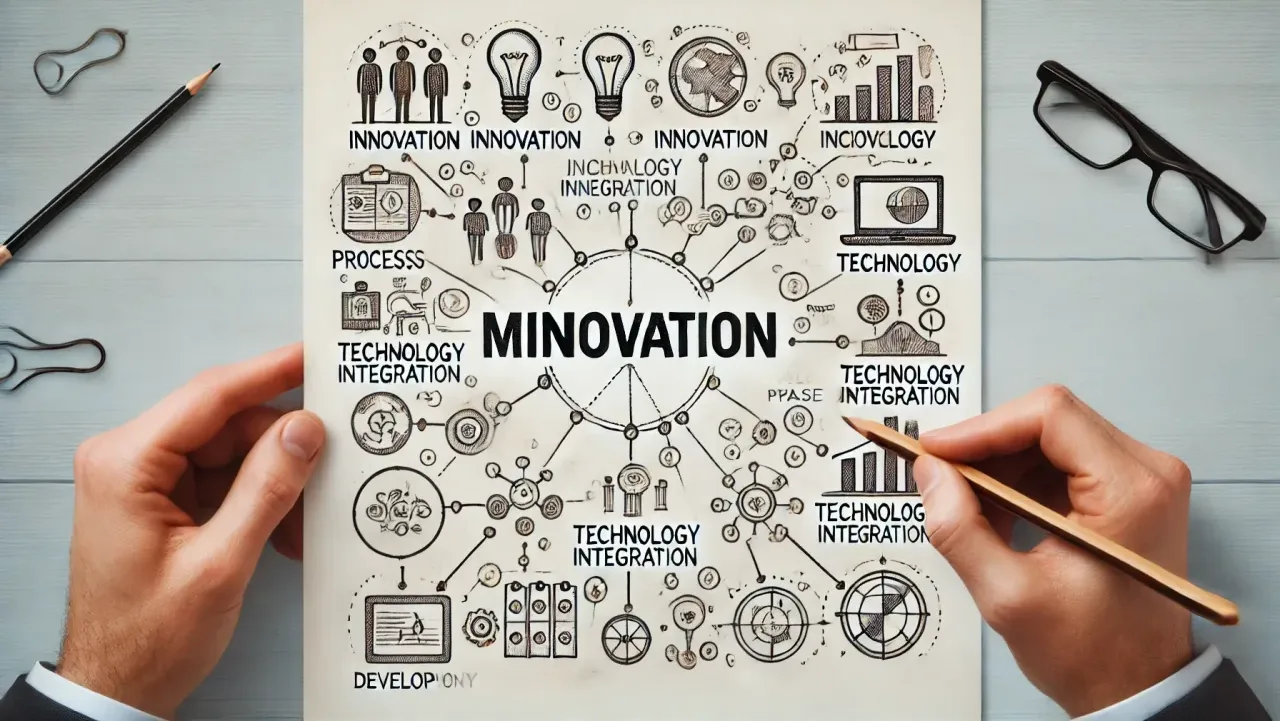In this Article
Introduction Open Source IoT Platforms
The Internet of Things (IoT) has revolutionized the way businesses operate, offering unparalleled opportunities for connectivity, data collection, and automation. Central to the successful deployment and management of IoT systems are IoT platforms. Open source IoT platforms, in particular, provide flexible, cost-effective solutions for businesses looking to harness the power of IoT without the constraints of proprietary systems. In this article, we will explore the top open source IoT platforms, highlighting their key features, benefits, and how they can enhance your IoT strategy.
What is an Open Source IoT Platform?
An open source IoT platform is a comprehensive suite of technologies that enable the provisioning, management, and automation of connected devices within the IoT ecosystem. These platforms provide the necessary tools and infrastructure to connect, manage, and analyze data from IoT devices, facilitating seamless communication and data flow.
Top Open Source IoT Platforms
1. ThingsBoard
ThingsBoard is a highly scalable and customizable open source IoT platform that enables rapid development, management, and scaling of IoT projects. It supports both cloud and on-premise deployments.
Key Features of ThingsBoard
- Device Management: Supports provisioning, monitoring, and updating of devices.
- Data Visualization: Provides powerful tools for real-time data visualization and dashboards.
- Rule Engine: Flexible rule engine for data processing and event handling.
Benefits of ThingsBoard
- Scalability: Easily scalable to accommodate growing IoT ecosystems.
- Flexibility: Highly customizable to meet specific business needs.
- Cost-Effective: Open source nature reduces the cost of deployment and management.
Use Cases for ThingsBoard
Smart Agriculture: Monitor and control irrigation systems, weather stations, and crop health.
Industrial IoT: Manage and monitor industrial equipment to improve efficiency and reduce downtime.
Smart Cities: Implement smart city solutions such as waste management and traffic control.
2. Eclipse IoT
Eclipse IoT is a collaborative open source community for developing open source IoT solutions. It provides a suite of tools and frameworks for building IoT applications.
Key Features of Eclipse IoT
- Modularity: Composed of various modular projects that can be used independently or together.
- Community Support: Strong community support for development and troubleshooting.
- Integration: Easy integration with other Eclipse projects and tools.
Benefits of Eclipse IoT
- Flexibility: Modular design allows for tailored solutions.
- Community-Driven: Benefit from continuous improvements and support from the community.
- Integration: Seamlessly integrates with other Eclipse projects and third-party tools.
Use Cases for Eclipse IoT
Smart Homes: Develop and manage smart home devices and applications.
Healthcare: Implement remote patient monitoring and health data analytics solutions.
Automotive: Develop connected car applications for enhanced vehicle diagnostics and telematics.
3. Kaa IoT
Kaa IoT is an open source IoT platform designed to manage connected devices and facilitate data collection, processing, and visualization. It is highly extensible and supports various IoT use cases.
Key Features of Kaa IoT
- Device Management: Comprehensive device management capabilities.
- Data Collection: Real-time data collection and processing.
- Extensibility: Highly extensible through custom plugins and modules.
Benefits of Kaa IoT
- Scalability: Easily scalable to handle large IoT deployments.
- Extensibility: Customizable through plugins and modules to meet specific requirements.
- Community Support: Strong community backing for development and troubleshooting.
Use Cases for Kaa IoT
Energy Management: Monitor and optimize energy consumption in smart buildings and grids.
Healthcare: Manage and monitor connected medical devices for improved patient care.
Retail: Implement smart inventory management and customer analytics solutions.
4. DeviceHive

Ai Image by Dall-E
DeviceHive is an open source IoT data platform with a focus on device management, data analytics, and machine learning. It supports cloud, on-premise, and hybrid deployments.
Key Features of DeviceHive
- Device Management: Robust device management capabilities.
- Data Analytics: Advanced data analytics and machine learning tools.
- Deployment Flexibility: Supports cloud, on-premise, and hybrid deployments.
Benefits of DeviceHive
- Flexibility: Flexible deployment options to meet different business needs.
- Advanced Analytics: Leverage machine learning and advanced analytics for deeper insights.
- Scalability: Scalable to accommodate growing IoT ecosystems.
Use Cases for DeviceHive
Smart Cities: Implement solutions for smart lighting, traffic management, and public safety.
Industrial IoT: Monitor and optimize industrial operations for improved efficiency and safety.
Telecommunications: Develop and manage connected devices and applications for telecom networks.
5. OpenRemote
OpenRemote is an open source IoT platform designed for smart building management, smart city applications, and other IoT projects. It offers a flexible and customizable solution for IoT management.
Key Features of OpenRemote
- Device Management: Comprehensive device management tools.
- Integration: Supports integration with various third-party systems and devices.
- Customization: Highly customizable to meet specific project requirements.
Benefits of OpenRemote
- Flexibility: Easily customizable for various IoT applications.
- Integration: Integrates seamlessly with third-party systems and devices.
- Scalability: Scalable to handle large-scale IoT deployments.
Use Cases for OpenRemote
Smart Buildings: Manage lighting, HVAC, and security systems for enhanced building efficiency.
Smart Cities: Implement solutions for waste management, water management, and public transportation. Agriculture: Monitor and control irrigation systems, weather stations, and crop health.
6. Mainflux
Mainflux is an open source IoT platform for managing devices, data, and applications. It is designed to be highly modular and scalable, making it suitable for a wide range of IoT projects.
Key Features of Mainflux
- Modularity: Highly modular architecture for flexibility and scalability.
- Multi-Protocol Support: Supports multiple communication protocols for device connectivity.
- Data Management: Advanced data management tools for efficient data collection and processing.
Benefits of Mainflux
- Flexibility: Modular design allows for easy customization and scaling.
- Multi-Protocol Support: Ensures compatibility with various IoT devices and networks.
- Community Support: Strong community backing for continuous development and support.
Use Cases for Mainflux
Industrial IoT: Manage and monitor industrial equipment for improved operational efficiency.
Smart Homes: Develop and manage smart home devices and applications.
Healthcare: Implement remote patient monitoring and health data analytics solutions.
7. Zetta
Zetta is an open source IoT platform based on Node.js, designed for building IoT servers that connect to various devices. It provides a robust framework for developing and managing IoT applications.
Key Features of Zetta
- Node.js Framework: Built on Node.js for scalability and performance.
- Device Connectivity: Supports various device protocols for seamless connectivity.
- Data Streaming: Real-time data streaming and analytics capabilities.
Benefits of Zetta
- Performance: High performance and scalability due to Node.js foundation.
- Flexibility: Supports a wide range of devices and protocols for versatile applications.
- Community Support: Active community for development and support.
Use Cases for Zetta
Smart Homes: Develop and manage smart home devices and applications.
Transportation: Implement fleet management and real-time tracking solutions.
Retail: Enhance customer experience with smart inventory management and personalized offers.
8. Thinger.io
Thinger.io is an open source IoT platform that provides a scalable cloud infrastructure for connecting and managing IoT devices. It offers easy-to-use tools for data visualization and application development.
Key Features of Thinger.io
- Scalability: Scalable cloud infrastructure for large IoT deployments.
- Data Visualization: Advanced tools for real-time data visualization and dashboards.
- APIs: Comprehensive APIs for integrating IoT data with other systems.
Benefits of Thinger.io
- Ease of Use: User-friendly interface and tools for easy IoT management.
- Scalability: Easily scalable to handle large IoT ecosystems.
- Integration: Robust APIs for seamless integration with third-party systems.
Use Cases for Thinger.io
Smart Cities: Implement solutions for smart lighting, traffic management, and waste management.
Industrial IoT: Monitor and optimize industrial operations for improved efficiency and safety.
Agriculture: Implement precision farming techniques for optimized resource use and increased crop yields.
9. Kura
Kura is an open source IoT platform developed by the Eclipse Foundation. It provides a comprehensive framework for managing IoT gateways and devices.
Key Features of Kura
- Gateway Management: Comprehensive tools for managing IoT gateways.
- Multi-Protocol Support: Supports various communication protocols for device connectivity.
- Data Management: Advanced data management tools for efficient data collection and processing.
Benefits of Kura
- Flexibility: Supports a wide range of devices and communication protocols.
- Scalability: Scalable to handle large IoT deployments.
- Community Support: Strong community backing for continuous development and support.
Use Cases for Kura
Industrial IoT: Manage and monitor industrial equipment for improved operational efficiency.
Smart Buildings: Manage lighting, HVAC, and security systems for enhanced building efficiency. Transportation: Implement fleet management and real-time tracking solutions.
10. Minnovation

Ai Image by Dall-E
Minnovation specializes in providing comprehensive IoT solutions tailored to meet the unique needs of businesses. Their platform ensures seamless integration, robust security, and enhanced performance.
Key Features of Minnovation
- Custom Solutions: Tailored IoT solutions to fit specific business requirements.
- Robust Security: Advanced security features to protect data and devices.
- Scalable Architecture: Supports scalable deployments to accommodate growing IoT networks.
Benefits of Minnovation
- Flexibility: Customized solutions to meet specific business needs.
- Security: Ensures data and device security through advanced features.
- Scalability: Easily scalable to support expanding IoT ecosystems.
Use Cases for Minnovation
Smart Cities: Implement solutions for smart lighting, waste management, and traffic control.
Industrial IoT: Enhance industrial operations through predictive maintenance and remote monitoring. Healthcare: Provide advanced healthcare solutions through connected medical devices and remote monitoring.
Conclusion
Open source IoT platforms offer flexible, cost-effective solutions for managing IoT devices, data, and applications. The top platforms highlighted in this article—ThingsBoard, Eclipse IoT, Kaa IoT, DeviceHive, OpenRemote, Mainflux, Zetta, Thinger.io, Kura, and Minnovation—each provide unique features and benefits suited to various industries and use cases. By leveraging these platforms, businesses can optimize their IoT strategies, improve operational efficiency, and drive innovation.
How We Can Help
At Minnovation, we specialize in providing comprehensive IoT solutions tailored to meet the unique needs of your business. Our expertise in various IoT management platforms ensures seamless integration, robust security, and enhanced performance. We offer consultation, development, and management services to help you harness the full potential of IoT technology. Our team is here to support you every step of the way. For more details please Contact us.
Reference
Related Blog Posts
How Smart Cities Connect: Getting Started with Edge AI and IoT Technology
How to Get Started with Edge AI and IoT Technologies in Smart Cities: Overcoming Integration Challenges In recent years, the concept of smart cities has evolved from a futuristic Read More
5 Step Strategy: Ensuring Security and Privacy in 15-Minute Smart Cities
Introduction Ensuring security and privacy in 15-minute smart cities is a critical challenge as urban areas become increasingly connected through IoT and edge AI technologies. These cities aim to Read More
What is a smart city and the challenge of legacy systems
How to Get Started with Integrating Legacy Systems in Smart Cities Smart cities are transforming urban landscapes by leveraging technology to improve the quality of life for residents. However, Read More




